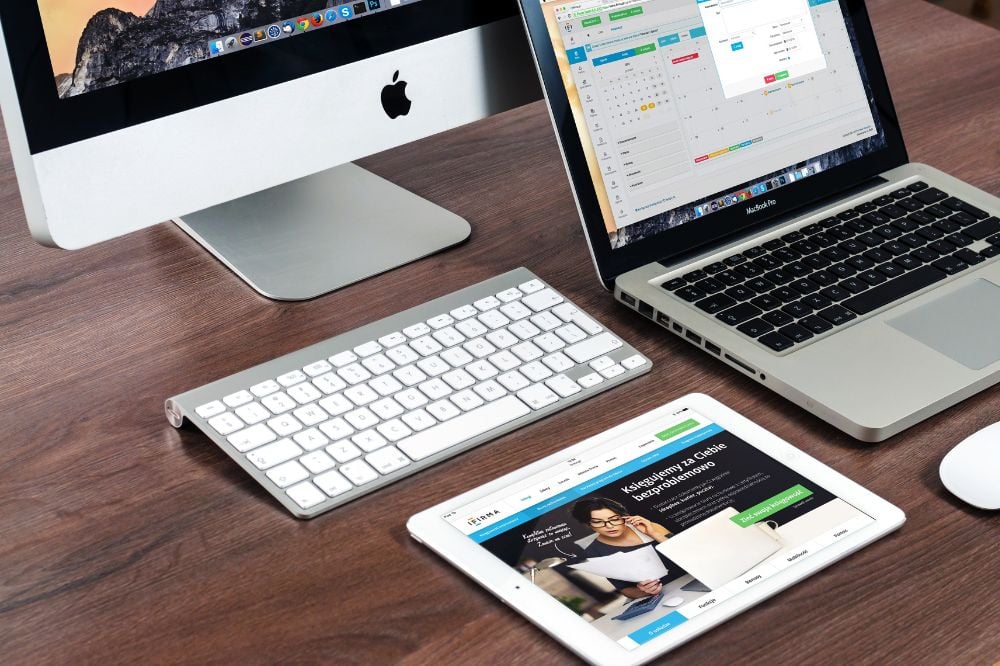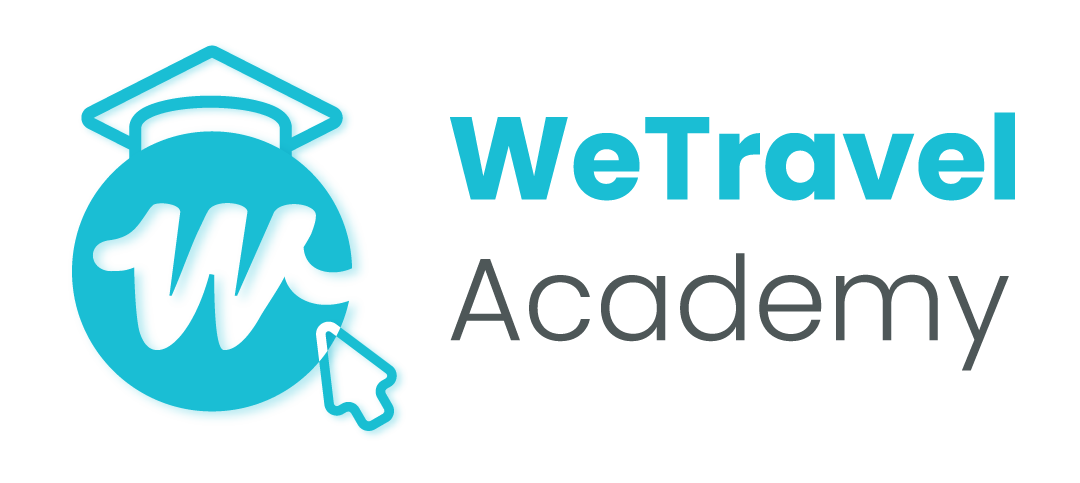Did you know that nearly 88% of people report that they will not return to a site if they have a bad user experience?
This goes to show exactly how important it is that your travel website is well-optimized and catered to the final goal of your site visitors.
The aim of optimizing your user experience (UX) is to create a space for your visitors to easily navigate and interact with your website. This relates to their interaction with every page and all the elements and features on the page.
Factors like how quickly users can find/locate something, how engaging they find your website visually, and whether anything impedes their visit all contribute to their overall UX, and thus, whether you make any conversions or book any tours.
Because ultimately, higher conversion rates mean more sales and more revenue for your travel company.
In this article, we will unpack the top ten tips and strategies you can use to ensure your website is perfectly curated for the optimal user experience.

Why Is A High Website Conversion Rate Important?
A website conversion rate refers to the number of visitors to your site that performs the desired goal or action. For example, booking a tour, or signing up to receive a newsletter.
How Is Conversion Rate Calculated
It is calculated by dividing the number of “desired goals” by the number of visitors to the site. I.e. if 100 people visited your website in a given period, and 2 of them booked a tour, then your conversion rate would be 2%.
Top 10 Tips To Increase Your Travel Website Conversion Rate
As mentioned above, providing a good user experience is imperative if you want to increase your conversion rate. Read on to discover the eleven UX tips you can use to improve your travel website conversion rate.
1. Optimizing Your Home Page
Your home page is your central hub, it is generally where visitors land when they discover your site. It also sets the tone and personality for your website and brand.
This is one of the main reasons why you should make sure that it is uncluttered, and includes key information. When it comes to your homepage, simplicity increases usability.
To reduce the risk of users bouncing from your homepage, it is essential that you have a quick loading speed (we will touch on this a bit later).
Another feature pertinent to the home page is adding functional drop-down menus that allow users to access specific categories. This will maximize the UX performance of your visitors.

2. Tailoring Your Website For Mobile Use
Did you know that when a site is optimized for mobile use, it shows up higher in the search results?
This is mainly due to the fact that a large proportion of traffic is mobile phone users. It should also be noted that site visitors are five times more likely to leave if the website isn’t conducive to mobile use.
When you design your website, ensure to include simple, clean navigation so that visitors can quickly find what they are looking for.
The best way to test whether your site is mobile-friendly is to open it on your phone. As a customer, does it open quickly enough? Can you easily find what you are looking for?
These are the factors that will influence your perspective on the site. It should be simple to understand what service your company can provide so that users can fathom whether it is of interest to them. The first impression they make will influence whether they are likely to become a customer and/or book a tour.
Simplify your site menu and ensure that all the information, drop-down menus, contact info, and CTA buttons are all visible so that they don't need to zoom in to be able to read.
3. Maintain Consistency Throughout Your Website
Maintaining cohesiveness throughout your website is paramount for a sense of reassurance, especially when it comes to e-commerce and travel websites. If you're selling something that has a high ticket price, be sure that your potential customers will keep an eye out for every detail on your website to see if it's reliable. After all, no one wants to give their credit card information to one of the thousands of fraudulent websites that live on the internet.
An easy way to build up that reassurance is by maintaining visual coherence throughout your travel website. This may seem a bit obvious, but having your website branded through and through will reflect the caliber of your business and showcase your virtues: that you're detail-oriented, that you care about the brand you're building, that you offer seamless experiences and many more.
If you're using third-party software, you need to make sure that it fully and seamlessly integrates with your website on a technological level and that it offers you a white-label solution that allows you to personalize the visual experience your client will have and have it resonate with your brand.
Introducing: WeTravel's Branded Login Pages with Custom URLs
We acknowledge how important these details are for your business. That's why, with WeTravel's new feature, you'll get to further customize your users' journey by branding WeTravel's login page with your own logo, colors, and URL. So, every time you send a payment reminder or something that requires your customers to log in to their trip pages, they'll be able to see a familiar face: yours! You can also customize this URL to further build reliability and avoid any confusion. If you're interested in knowing more, have a look at all the other features WeTravel has prepared for your business.

4. Clear Navigation Paths
To create the optimal user experience for your site visitors, your navigation paths should be clear so that it is easy for them to navigate around. When this is the case, you are more likely to reach a conversion.
Including a sitemap is essential. It is basically a filing system for Google so that it knows which pages on your website are important. It is a logical structure that is inclusive of the significant sections and links.
A navigation path also pertains to simplifying the checkout process. Minimizing the steps for a customer to book a tour makes it more likely that they will follow through with the booking procedure.
5. Quick Loading Speed Of Webpages
Statistics show that a loading speed of over 3 seconds will cause 53% of mobile visitors to leave the site.
The loading speed refers to the time it takes for a website to load on your device. The aim is for users to be able to navigate your website quickly and locate the products or services that they are looking for.
You can use an efficient tool like Google’s PageSpeed Insights to help your site reach a faster loading speed.
6. Clear Call-To-Actions
Call-to-actions (CTA) are nifty tools that aim to entice people to “hit the button” and take the next steps on your site. Using striking CTAs can be a vital difference in whether you made a conversion.

The CTAs should have a clear description so that users will know what they will achieve if they press it. Use action words to excite them. Be strategic in your color usage, either use green (the universal color for a CTA) or use the signature color of your brand (brand consistency never goes amiss).
The usage and placement of CTAs are integral to conversion rates. 84% of people are less likely to click your CTA if it is below the fold line, so ensure that it is well placed and easy to locate.
7. Include Eye-Catching Visuals
Using images on your website gives it more personality, lifts the page and helps to make the information look more visually appealing. Using images or illustrations that are more original as opposed to stock versions gives it a more realistic feel, and makes the user feel more connected to your brand.
Maintain the cohesiveness of your travel website by utilizing a strong hue throughout.
Images may help in communicating the information on the page to the reader. You can also include engaging videos to communicate your message effectively.
To ensure that your site meets the criteria for an eye-catching design, you should optimize the following features:
- Stick to minimal fonts
- Use high-resolution images
- Do not overcomplicate your website with too many colors
- Make sure that there is coherence across all pages
White space is underrated. This is a practical way to ensure that your copy is more legible for the reader and easy to navigate overall.

8. Include Product & Price Comparisons
It is only natural for customers to compare products and packages, so the best practice is to allow them to compare your products and features on your site. This may deter them from visiting competing sites when they have a vast array of information in front of them.
This can be especially beneficial when you understand what they are after. In order to increase conversion rate optimization, understand the deciding criteria and what to highlight. This may entice them to pack their travel bag when they can appreciate all your available offers.
9. Live Chat Box Feature
There is nothing more frustrating than having a question or looking for an answer and not being able to find it on a site.
Including a live chat box feature will allow users to get the answers they are looking for quickly and easily. This will provide a happier customer experience for the user and improve your website conversions.
10. Website Readability
The readability of your website is crucial to UX. Your copy should be easy to read and interpret, especially in a world where most viewers just skim the content.
You can’t expect a high number of conversions if your content is difficult to understand. This makes it confusing for them to comprehend what your business does, and what they should do on your site.
Clear, concise copy will provide them with the information they need and steer them to the CTA.

Conclusion
Website optimization is key to providing a good user experience and increasing the number of conversions.
There are various ways to increase your conversion rate using UX strategies. These include home page optimization, ensuring the loading time of your page is under three seconds, including a live chat box feature, clear CTAs, ensuring that your website is optimized for mobile use, and adequate readability, etc.
There is an array of tests to choose from that enable you to test the overall performance of your website. These include usability, A/B, security, functionality, database, performance, responsiveness, and mobile application tests.
Ultimately, effectively managing the UX of your website will assist in increasing your conversion rate, which will bring in more sales and more revenue for your travel company.
New resources, straight to your inbox
We’re committed to your privacy. WeTravel uses the information you provide to us to contact you about our relevant content, products, and services. You may unsubscribe at any time.




